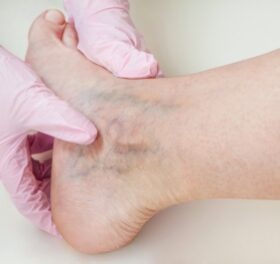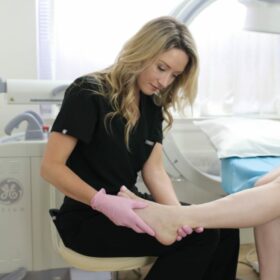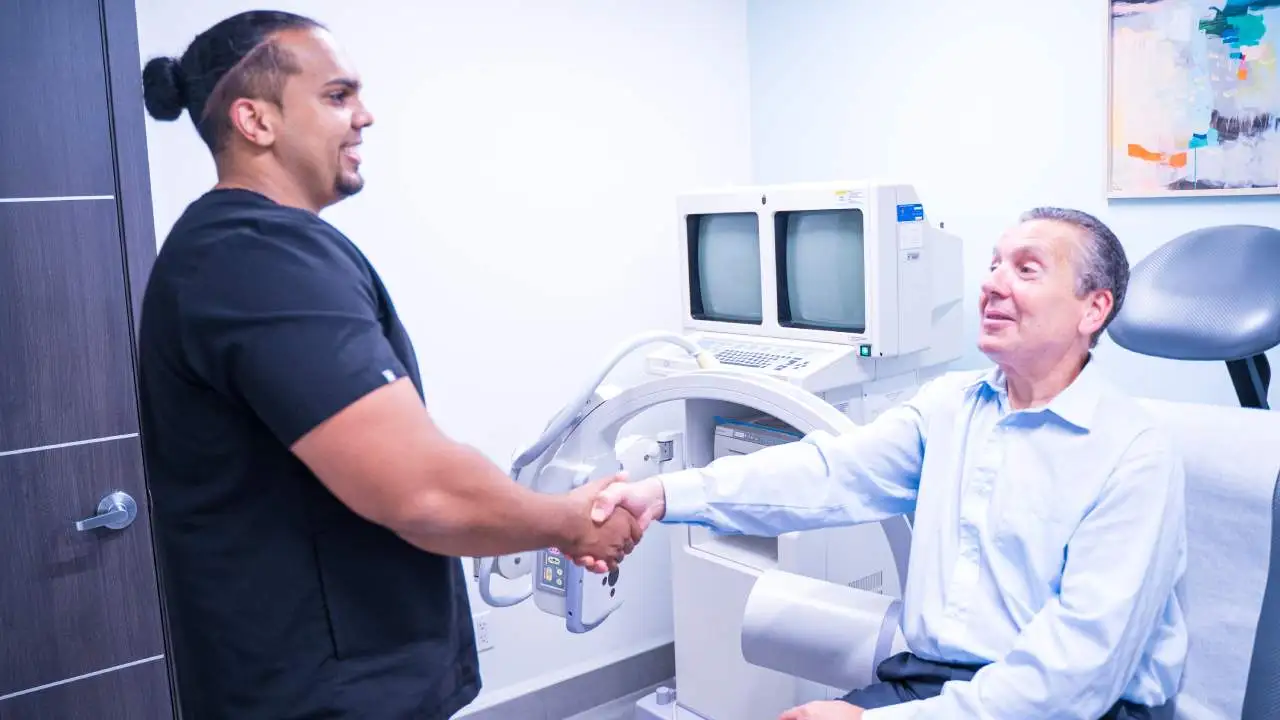If you’re dealing with the discomfort and unsightly appearance of varicose veins or spider veins, you may be wondering if your insurance will cover the necessary treatments. Before we dive into the details of insurance coverage, it’s essential to understand the vein conditions that may require treatment, such as varicose veins and spider veins.
Varicose veins and spider veins are common venous disorders that affect millions of people. Varicose Veins are enlarged, twisted veins that typically appear on the legs. They often result from damaged or weakened vein valves, causing blood to pool in the veins. Spider Veins are smaller, web-like veins that can appear on the legs, face, or other parts of the body.
Varicose veins and spider veins are often caused by chronic venous insufficiency, a medical condition caused by the collapse or weakening of vein valves. When the vein valves weaken, gravity forces blood to flow backward and accumulate in the leg veins, eventually leading to spider veins, varicose veins, and other complications.
In some cases, spider veins and varicose veins aren’t inherently dangerous. But venous insufficiency is an inherently dangerous condition. As such, vein treatments are often eligible for insurance coverage. Vein Treatment Clinic provides hassle-free insurance verification before your appointment to help you maximize insurance coverage for your procedure.
Vein Treatment Clinic has state-of-the-art vein treatment clinics in New York City, Long Island, New Jersey, California, and Maryland. Please schedule an appointment at your nearest medical center for vein treatment in New York.
What Vein Treatments are Typically Covered by Insurance?
Insurance coverage for vein treatments can vary depending on the specific insurance plan, the severity of your condition, and the treatment recommended by your vein specialist. In general, insurance providers are more likely to cover treatments that are deemed medically necessary rather than those performed solely for cosmetic purposes.
Common minimally invasive vein treatments that may be covered by insurance include:
- Endovenous Laser Ablation (EVLA): This minimally invasive procedure uses laser energy to close off faulty veins, which is often the underlying cause of varicose veins.
- Radiofrequency Ablation (RFA): RFA is another minimally invasive technique that uses radiofrequency energy to seal problematic veins, allowing blood to reroute to healthier veins.
- VenaSeal: VenaSeal is a vein adhesive that permanently seals diseased veins. It’s a minimally invasive alternative to traditional vein closure methods.
- Ambulatory Phlebectomy: In this procedure, small incisions are made to remove larger varicose veins close to the surface of the skin.
- Compression Stockings: Some insurance plans may cover the cost of compression stockings, which can help manage symptoms and improve blood flow.
Insurance Verification: Your First Step
Before undergoing any vein treatment, it’s crucial to verify your insurance coverage. At Vein Treatment Clinic, we offer hassle-free insurance verification to help you understand your benefits and potential out-of-pocket expenses. This can save you from unexpected financial burdens and ensure a smoother treatment process.
To get started with insurance verification, you’ll need to provide your insurance information to our clinic. This typically includes your insurance card, policy number, and any necessary personal information. Once we have the details, we’ll contact your insurance provider to determine the extent of your coverage for vein treatments.
Factors Affecting Insurance Coverage
Several factors can influence whether your insurance covers vein treatment:
- Medical Necessity: As mentioned earlier, insurance providers are more likely to cover treatments deemed medically necessary. If you experience symptoms like pain, swelling, or skin changes due to your vein condition, it’s more likely that your treatment will be covered.
- Documentation: Proper documentation from your vein specialist is crucial. Your doctor will need to provide detailed information about your condition, the recommended treatment, and why it’s medically necessary.
- Insurance Plan: Different insurance plans have varying coverage policies. Some plans may have more coverage for vein treatments, while others may offer limited benefits.
- Preauthorization: Your insurance provider may require preauthorization before approving certain treatments. Your vein specialist will assist in obtaining preauthorization if necessary.
How to Get Insurance to Pay for Vein Treatment
To increase the likelihood of your insurance covering vein treatment, follow these steps:
- Consult a Vein Specialist: Seek consultation with a board-certified vein doctor who can diagnose your condition, recommend appropriate treatments, and provide documentation.
- Document Symptoms: Keep a record of any symptoms you experience due to your vein condition, such as pain, swelling, or skin changes. Share this information with your vein specialist, and don’t ignore any symptoms, even if they seem irrelevant.
- Follow Medical Advice: Adhere to your vein specialist’s treatment recommendations. If they recommend a specific procedure, it’s usually because they believe it’s medically necessary. Furthermore, in some cases, you may be asked to wear compression stockings for a few weeks before you become eligible for insurance coverage.
- Verify Coverage: As mentioned earlier, take advantage of our hassle-free insurance verification service to understand your coverage and potential out-of-pocket costs.
Specific Insurance Providers and Coverage
Let’s take a closer look at how coverage for vein treatments may vary with some specific insurance providers:
- Blue Cross Blue Shield: Blue Cross Blue Shield is one of the largest health insurance providers in the United States. Coverage for vein treatments can vary depending on your specific plan. Generally, Blue Cross Blue Shield may cover vein treatments if they are deemed medically necessary. Our team can provide insurance verification to determine eligibility.
- Medicaid: Medicaid is a state and federally funded program that provides health insurance to eligible low-income individuals and families. Coverage for vein treatments under Medicaid may be available, but eligibility and coverage specifics can vary by state.
- United Healthcare: United Healthcare offers a range of insurance plans with varying coverage options. Coverage for vein treatments can depend on your specific plan and the medical necessity of the treatment. Be sure to verify your coverage and consult with your vein specialist to explore treatment options that align with your insurance benefits.
- Cigna: Cigna is another major health insurance provider. Coverage for vein treatments may be available, but it’s essential to check your plan details and consult with your vein specialist to determine eligibility and the extent of coverage.
Is Sclerotherapy Covered by Insurance?
Sclerotherapy is a popular and effective treatment for spider veins, where a solution is injected into the affected veins, causing them to collapse and fade away. Whether or not sclerotherapy is covered by insurance can depend on several factors:
- Medical Necessity: If your spider veins are causing symptoms, caused by underlying chronic venous insufficiency, or deemed medically necessary to treat, insurance may cover sclerotherapy. Your vein specialist will assess your condition and provide documentation to support the medical necessity.
- Cosmetic Sclerotherapy: If you’re seeking sclerotherapy primarily for cosmetic reasons, insurance is less likely to cover the procedure.
Preparing for Your Vein Treatment
Once you’ve verified your insurance coverage and determined the appropriate treatment plan with your vein specialist, it’s time to prepare for your vein treatment. Here are some general steps to help you get ready:
- Follow Pre-Treatment Instructions: Your vein specialist will provide you with specific pre-treatment instructions, which may include avoiding certain medications, fasting before the procedure, or wearing comfortable clothing.
- Arrange Transportation: Depending on the treatment, you may need someone to drive you home afterward, so make transportation arrangements in advance.
- Plan for Recovery: Some vein treatments have minimal downtime, while others may require more extended recovery periods. Ensure you have a plan in place for recovery. You should also have the compression stockings necessary to support your recovery.
- Post-Treatment Care: Follow your vein specialist’s post-treatment care instructions closely. This may include wearing compression stockings, taking prescribed medications, and avoiding strenuous activities for a few days.
Claim Hassle-free Insurance Verification
Insurance coverage for vein treatment depends on various factors, including your insurance plan, the medical necessity of the treatment, and the specific procedure recommended by your vein specialist. At Vein Treatment Clinic, we are committed to helping you navigate the insurance process and access the necessary vein treatments.
If you’re wondering, “Is vein treatment covered by insurance?” the answer is that it can be, but it’s essential to verify your coverage, consult with a vein specialist, and follow the necessary steps to increase the likelihood of insurance approval. If you have any further questions or would like to begin the insurance verification process, don’t hesitate to reach out to us at Vein Treatment Clinic. Our board-certified vein doctors and state-of-the-art clinics across the United States are here to provide you with the best possible care for your vein conditions.












